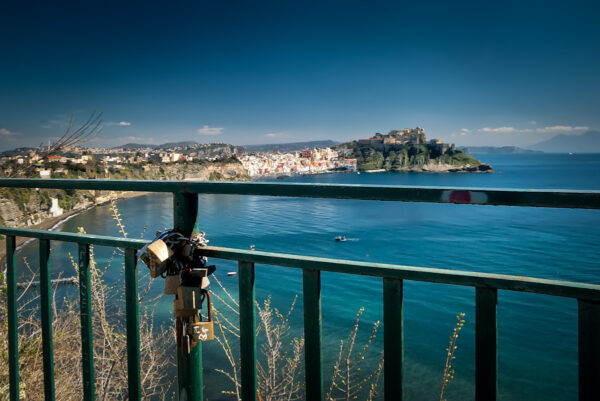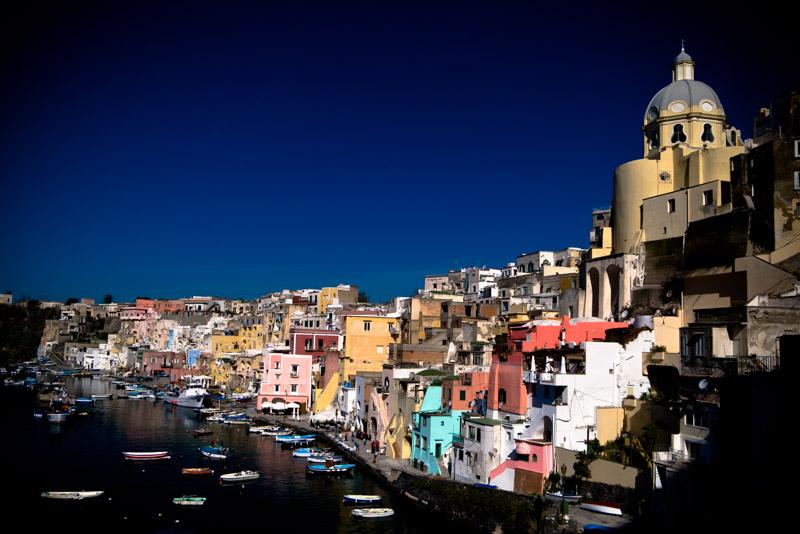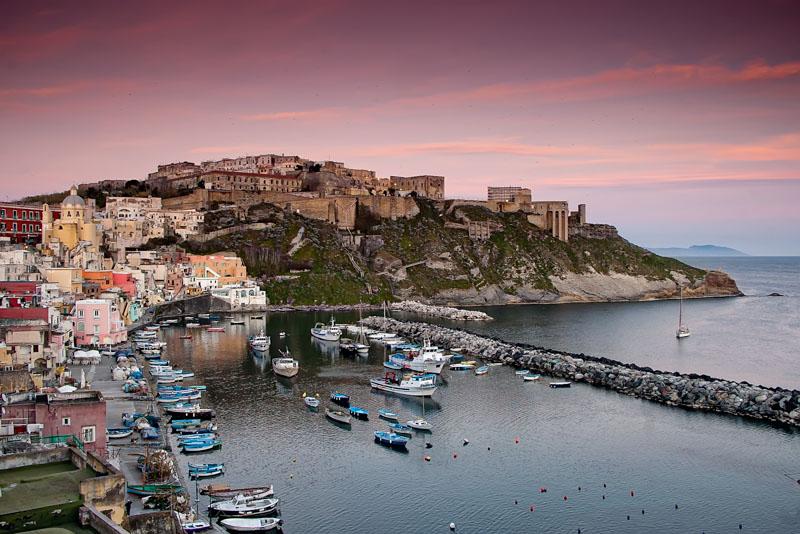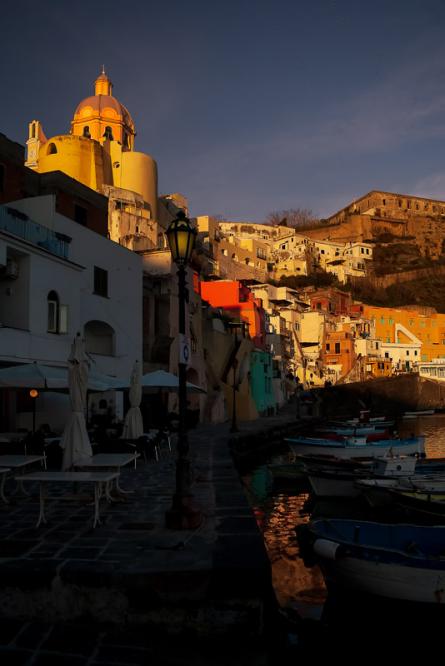
Springtime is the perfect moment to discover Procida, the Italian capital of culture for 2022.
The tiny yet beautiful island of Procida is the smallest and least known of the islands of the Gulf of Naples.
You may have already heard of Capri and Ischia. Does perhaps Procida sound new to you?
Next year we all hope that the pandemic emergency will be over and that we’ll be able again to travel freely!
Here is a tiny guide and some beautiful images of this charming island! And don’t miss the photo gallery at the end of the page.
What can you see in Procida?
Procida has much to offer to the visitor. thanks to its relative lack of crowding and its peculiar characteristics, such as the gardens. In the right season, those are full of flowers, lemons, and oranges. A happy sight and with a beautiful smell!
The best time to visit the island is springtime, but also autumn is fascinating. The only overcrowded months are July and August.
Procida is a tiny island; if you have a good physical shape you can visit it entirely by foot. But there is any way a reliable service of public buses to get you everywhere you wish in a few minutes.
Some of the main attractions are listed below.
Viewpoint

The Belvedere dei due cannoni (Viewpoint of the two guns) offers a superb view. It’s an example of what the island will give you during the walk. From this high vantage point, you’ll see in the background, the two promontories of Punta Solchiaro and Punta Pizzaco, that stretch out into the sea like the fingers of a hand. Then a long and narrow black sand beach reminds us of the volcanic nature of Procida. Finally – just below us – the polychromatic charm of Marina della Corricella. More on that later. And on top of everything, almost under our feet, the yellow and grey dome of the Church of Santa Maria delle Grazie.
The old village

Terra Murata (Walled ground) is the original urban core of the island.
It’s located on its highest point and thus more easily defensible from the assaults of Saracen pirates who once marauded the coast.
The original urban structure was deeply changed in the sixteenth century. Surrounding walls and the Royal Palace were built, and a large area of the hill was levelled to create a square. The Royal Palace has an interesting history. It was later converted into a prison. The penitentiary remained active until 1988. Completely abandoned after its closure, it is now in a state of neglect and decay. But the windows overlooking the sea, still closed by heavy iron grates, make it clear what splendid view was offered every day to its guests. Almost an accessory punishment to make them regret their lost freedom more.
All around the square stands what remains of the original village. A web of narrow passages overlooked by doors, stairs, windows, and arches. Continuing to wander around you’ll come across the convent of Santa Margherita, overlooking the sea.
Marina della Corricella

But the real gem of Procida is the old fishing village: Marina della Corricella.
Corricella is a wonderful photographic setting. Exploring the village means being in contact with a continuous source of photographic inspiration. Multicolored houses leaning one next to the other, one above the other. Arches, balconies, stairs, windows, steps, shadows, colours, glimpses of the sea, boats, fishing nets. Among all this thrill the work activities of fishermen, restaurateurs, moorers, and housewives.
Yellow, pink, green, blue, red: the colours of the houses of Corricella are not there only for aesthetic reasons. Once upon a time, seamen returning from long journeys recognized their home from miles away, thanks to the colour that distinguished it from other neighbours.

But that this was the most beautiful corner of Procida, the first inhabitants of the island had already understood. The name “Corricella” derives from the Greek words “chora kalè” which means “beautiful district”.
Why Procida?

During the years Procida has been visited and has been the source of inspiration for writers. More recently has been set for many movies.
In the ’50s it was a fashionable residence for Italian writers. Vasco Pratolini was a guest of the Eldorado Hotel, as was Alberto Moravia. Her wife Elsa Morante during her staying at the hotel wrote her novel L’ Isola di Arturo (Arturo’s Island, Liveright Publishing/W.W. Norton & Company). The plot is set right on the island.
Hotel Eldorado got out of operation many years ago. For a while, its beautiful garden of lemon and orange trees was converted into a memorial. Nowadays it’s also closed, and the beautiful trees can only be admired from a distance.
Earlier, in 1811, the French writer Alphonse de Lamartine stopped in Procida during his Grand Tour and fell in love with a local girl: Graziella. The girl will provide him with the basic inspiration for the novel that bears her name and also has Procida as its setting. (Graziella, a story of Italian love)
Movie set
In more recent years, Procida has been set for many movies. Among them, Il Postino: The Postman, directed by the English filmmaker Michael Radford.
The Talented Mr Ripley directed by Anthony Minghella.
Sandra (released as Of a Thousand Delights in the UK), directed by the Italian filmmaker Luchino Visconti and many others.

Did you like it? For more beautiful photos and travel stories, just use the menu above and browse the site. Do you know that you can send any of my images as an e-card?
Just choose your favourite image, press the e-card- button down on the right and that’s it, the pic is ready to be sent to your loved ones! Just give it a try, it’s fun and it’s free!
Would you also like to read all my upcoming travel stories? Just click here and subscribe to my newsletter.
I will mail you only when I release a new article. Your information is 100% safe and never shared with anyone














bellissimo
Stunning photos! I missed your blogs and am glad to receive them again. I’ll save this one to my travel list, thank you!
Thank you Karen! Glad you’re on board! Stay safe and all the best!